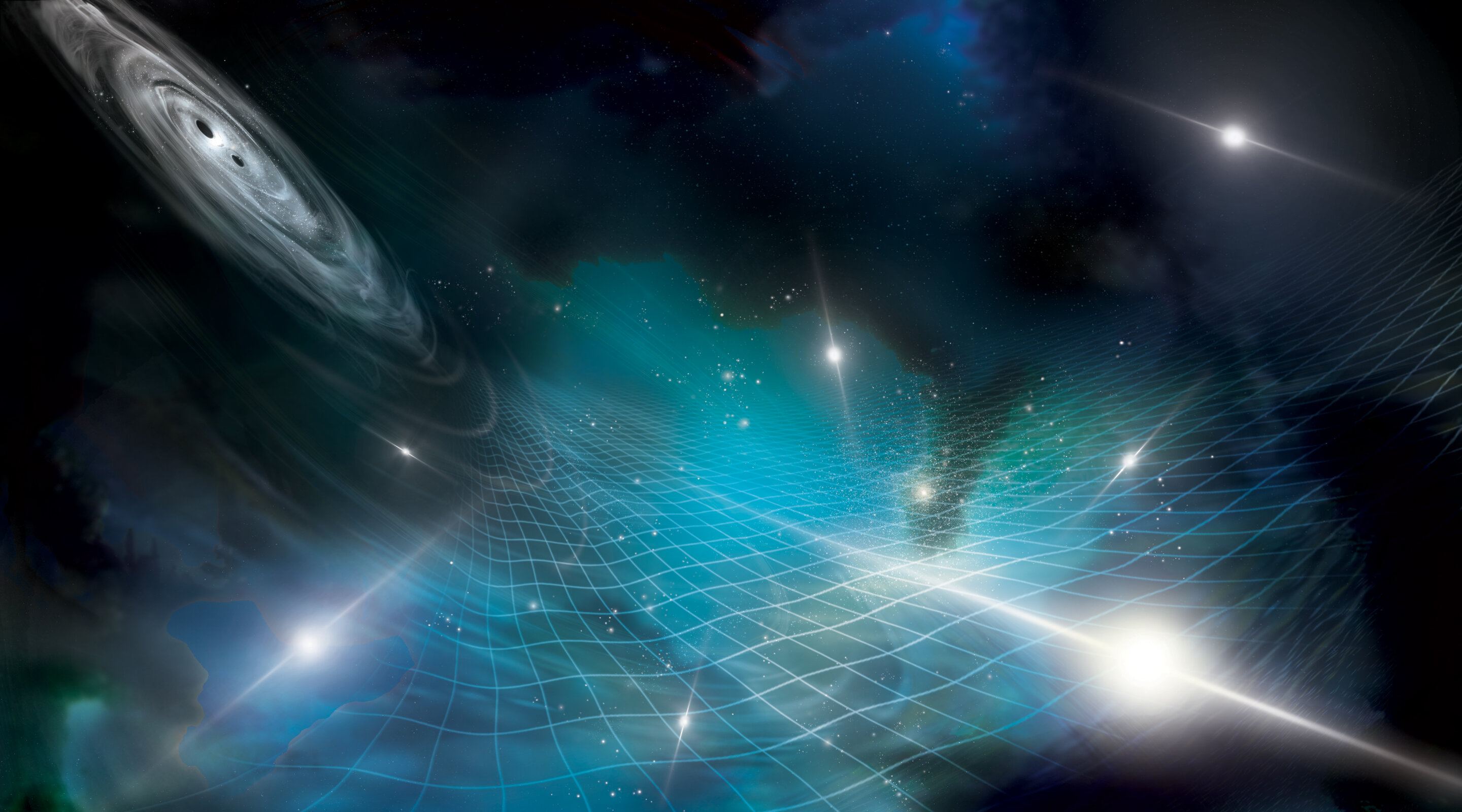
In this artistic representation, a pair of supermassive black holes emits gravitational waves that ripple through the fabric of space-time. These waves then affect the paths of radio waves emitted by pulsars. By carefully measuring the radio waves, scientists from the North American Nanohertz Observatory for Gravitational Waves (NANOGrav) have made the first ever detection of the universe’s gravitational wave background.
After 15 years of data collection, the NANOGrav scientists have not only detected the gravitational wave background, but they have found that it is much louder than expected. These powerful waves carry a million times more energy than the bursts of gravitational waves from black hole and neutron star mergers detected by other experiments. The majority of these massive waves are believed to be generated by pairs of supermassive black holes spiraling towards cataclysmic collisions throughout the cosmos.
This groundbreaking discovery opens a new window of observation on the universe. The existence and composition of the gravitational wave background provide valuable insights into various long-standing questions, such as the fate of supermassive black hole pairs and the frequency of galaxy mergers. NANOGrav scientists can currently measure the overall gravitational wave background, but not the radiation from individual sources. However, even this overall measurement has yielded surprising results, with the gravitational wave background being about twice as loud as expected.
The NANOGrav team faced numerous challenges in their search for these ultra-low-frequency gravitational waves. Traditional earthbound instruments like LIGO and Virgo detect high-frequency waves, whereas the gravitational wave background consists of ultra-low-frequency waves that take years or even decades to pass by. To overcome this, the NANOGrav team observed pulsars, which emit beams of radio waves with incredibly precise timing. When a gravitational wave passes between us and a pulsar, it affects the timing of the radio wave pulses.
Over a period of 15 years, NANOGrav scientists closely timed the radio wave pulses from dozens of millisecond pulsars in our galaxy using telescopes like the Arecibo Observatory, the Green Bank Telescope, and the Very Large Array. By analyzing data from an array of 67 pulsars, they were able to detect the hum of the gravitational wave background.
The likely sources of these gravitational waves are pairs of supermassive black holes in a death spiral. These colossal black holes exist at the core of nearly all galaxies, including our own Milky Way. When galaxies merge, their supermassive black holes can come together and begin orbiting each other. Eventually, they get close enough that the energy theft stops, resulting in a cataclysmic collision. The existence of the gravitational wave background supports this theory and helps estimate how frequently galaxies have collided throughout history.
While supermassive black hole pairs are the main suspects for these waves, other theories suggest alternative sources. String theory predicts the presence of cosmic strings that emit gravitational waves, and another proposal suggests that the universe began with a Big Bounce rather than a Big Bang.
In conclusion, the discovery of the gravitational wave background by NANOGrav scientists provides valuable insights into the universe’s evolution. This groundbreaking achievement opens doors for further research and exploration in the realm of gravitational waves.
Denial of responsibility! SamacharCentrl is an automatic aggregator of Global media. In each content, the hyperlink to the primary source is specified. All trademarks belong to their rightful owners, and all materials to their authors. For any complaint, please reach us at – [email protected]. We will take necessary action within 24 hours.

Shambhu Kumar is a science communicator, making complex scientific topics accessible to all. His articles explore breakthroughs in various scientific disciplines, from space exploration to cutting-edge research.

